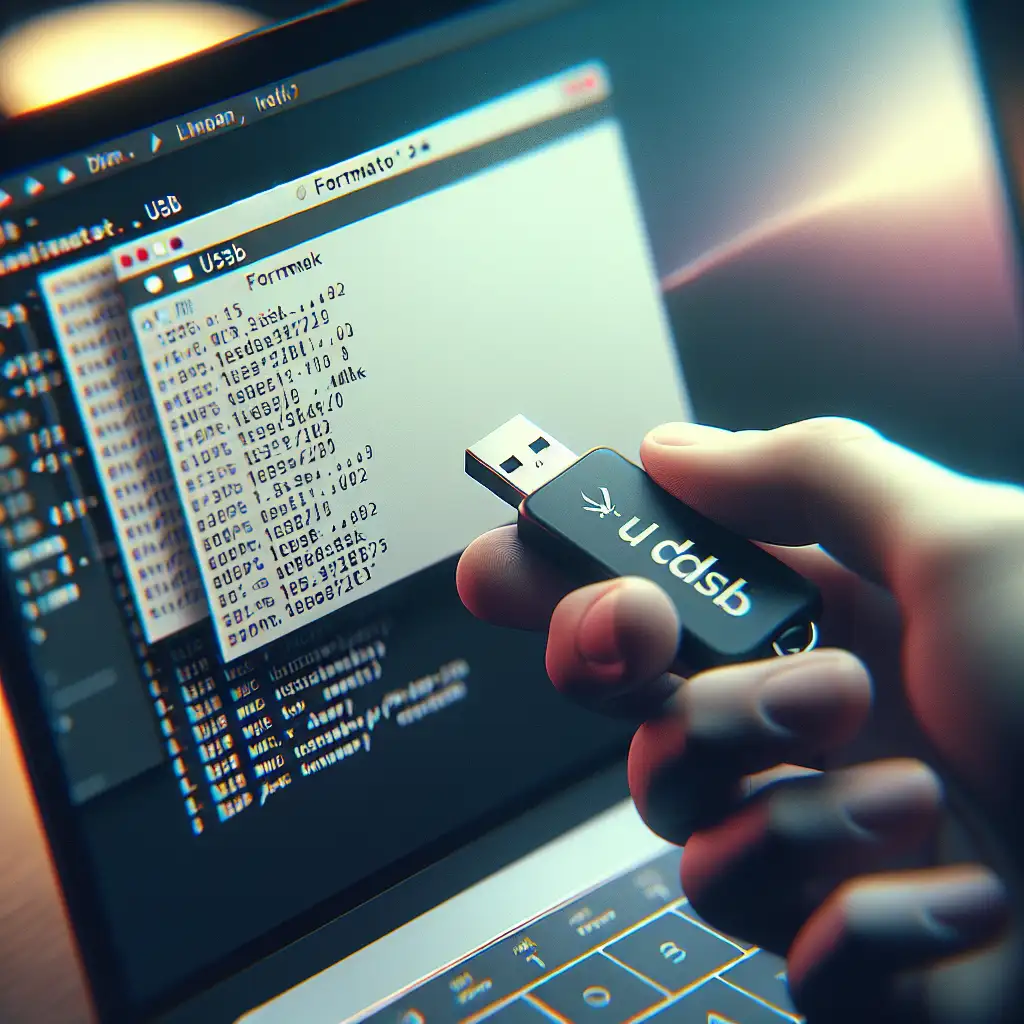Mastering USB Formatting in Linux: Beyond the Basics for Reliable Storage Management
When it comes to managing portable storage, correctly formatting a USB drive is a crucial step that directly impacts performance, compatibility, and data integrity. While most users rely on convenient graphical tools for formatting USBs in Linux, mastering command-line techniques can take your workflow to the next level — increasing control, preventing common pitfalls like permission errors or the wrong partition types, and enhancing reliability.
In this post, I’ll guide you through practical steps to format USB drives in Linux confidently and efficiently, whether you're prepping drives for system backups, media sharing, or advanced projects.
Why Format Your USB Drive Properly in Linux?
- Optimal Performance: Correct filesystems and partition schemes ensure fast read/write speeds.
- Cross-Device Compatibility: Choose file formats that work with Windows, macOS, embedded devices, etc.
- Data Integrity & Security: Avoid corruption by using proper unmounting and formatting techniques.
- Avoid Common Errors: Prevent permission-related formatting failures or accidentally formatting your primary disk.
Step 1: Identify Your USB Drive
Before changing anything on your system's disks, it’s vital to correctly identify your USB device to avoid accidental data loss.
Plug in your USB drive and run:
lsblk
Sample output might look like this:
NAME MAJ:MIN RM SIZE RO TYPE MOUNTPOINT
sda 8:0 0 465.8G 0 disk
├─sda1 8:1 0 100M 0 part /boot/efi
├─sda2 8:2 0 465.7G 0 part /
sdb 8:16 1 14.6G 0 disk
└─sdb1 8:17 1 14.6G 0 part /media/user/USB
Here:
sdais my system's main disk.sdbis my USB drive (approx. size matches).
Always double-check size and mount points to prevent mistakes.
Step 2: Unmount Your USB Drive
If the device is automatically mounted (e.g., /media/user/USB), unmount it before formatting:
sudo umount /dev/sdb1
Replace /dev/sdb1 with your actual partition.
Step 3: Wipe Existing Partitions (Optional but Recommended)
For a clean start, you can wipe partition tables using wipefs or remove partitions using fdisk.
To list signatures:
sudo wipefs /dev/sdb
To remove all partitions interactively:
sudo fdisk /dev/sdb
Inside fdisk:
- Type
pto list partitions. - Type
dand select partitions one by one to delete. - Type
wto write changes.
Alternatively, zero out first few megabytes of disk (erases MBR/GPT):
sudo dd if=/dev/zero of=/dev/sdb bs=1M count=10 status=progress
Use this with caution!
Step 4: Create a New Partition Table
Depending on your needs, choose between:
- MBR (msdos): Older compatibility.
- GPT: Modern standard for large drives and newer systems.
Example of creating a GPT table via parted:
sudo parted /dev/sdb -- mklabel gpt
Or MBR:
sudo parted /dev/sdb -- mklabel msdos
Step 5: Create Partitions Using parted or fdisk
Using parted - Example creating one partition occupying full drive formatted as FAT32
sudo parted -a optimal /dev/sdb mkpart primary fat32 0% 100%
Check partitions with:
lsblk /dev/sdb
Alternatively using fdisk interactively:
sudo fdisk /dev/sdb
Commands inside fdisk:
- Type
nfor new partition - Choose primary (default)
- Accept defaults for full size
- Set type with
t(e.g., type ‘b’ for W95 FAT32) - Write with ‘w’
Step 6: Format the Partition with Filesystem of Your Choice
Choosing filesystem depends on use-case:
| Filesystem | Pros | Cons | Recommended For |
|---|---|---|---|
| FAT32 | Universal/Linux/Win/macOS | Max file size ~4GB | General use on USB sticks |
| exFAT | Larger files support; compatible mostly | Requires installing tools on some distros | Large files/media transfers |
| NTFS | Windows-compatible; journaling | Requires ntfs-3g drivers on Linux | Sharing with Windows mostly |
| ext4 | Linux-native; journaling; performance | Not compatible with Windows/macOS natively | Linux-only environments |
Format example FAT32
First confirm partition path — likely /dev/sdb1.
sudo mkfs.vfat -F32 /dev/sdb1 -n MY_USB_DRIVE
Format example exFAT (requires exfat-utils/exfatprogs installed)
On Debian/Ubuntu:
sudo apt install exfatprogs -y
sudo mkfs.exfat /dev/sdb1 -n MY_USB_DRIVE_EXFAT
Format example ext4
sudo mkfs.ext4 /dev/sdb1 -L MY_LINUX_USB
Step 7: Safely Eject Your USB Drive
Before unplugging your device, ensure all data is flushed and unmounted.
sync && sudo eject /dev/sdb
Or manually unmount if needed:
sudo umount /dev/sdb1 && sync && sudo eject /dev/sdb
Bonus Tips for Power Users
Automating the Process in One Script
Here's a simplified example script format-usb.sh that formats a specified device as FAT32 safely after user confirmation:
#!/bin/bash
DEVICE=$1
if [ -z "$DEVICE" ]; then
echo "Usage: sudo $0 /dev/sdX"
exit 1
fi
echo "Warning! This will erase all data on $DEVICE."
read -p "Type YES to continue: " confirmation
if [ "$confirmation" != "YES" ]; then
echo "Aborting."
exit 2
fi
sudo umount ${DEVICE}*
echo "Creating MBR partition table..."
sudo parted $DEVICE mklabel msdos > /dev/null
echo "Creating primary partition..."
sudo parted $DEVICE mkpart primary fat32 0% 100% > /dev/null
PARTITION=${DEVICE}1
echo "Formatting partition as FAT32..."
sudo mkfs.vfat -F32 $PARTITION -n LINUX_USB
sync
echo "Done! You can now safely remove $DEVICE"
Make executable:
chmod +x format-usb.sh
Run with root privileges carefully!
Final Thoughts
Mastering USB formatting in Linux via command-line unlocks powerful capabilities beyond what GUI tools offer. It helps in ensuring you're absolutely sure what operations are happening under the hood — safeguarding your data and saving time troubleshooting permission issues or incompatible formats later.
Next time you need to prepare a USB thumb drive for work or play, try these steps out and see how much more confident you feel managing your portable storage!
Have questions or want me to cover specific filesystem setups? Drop a comment below!
